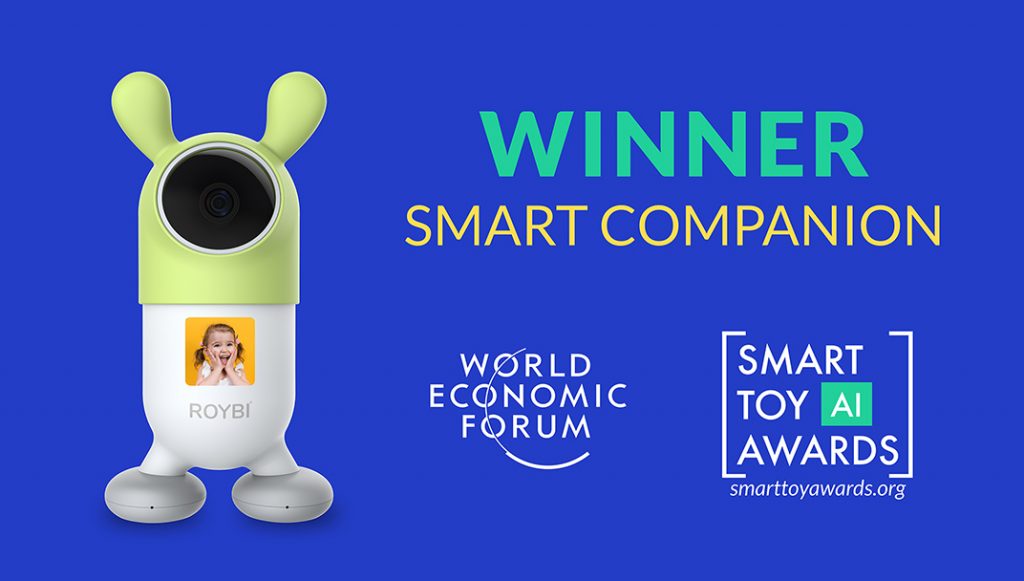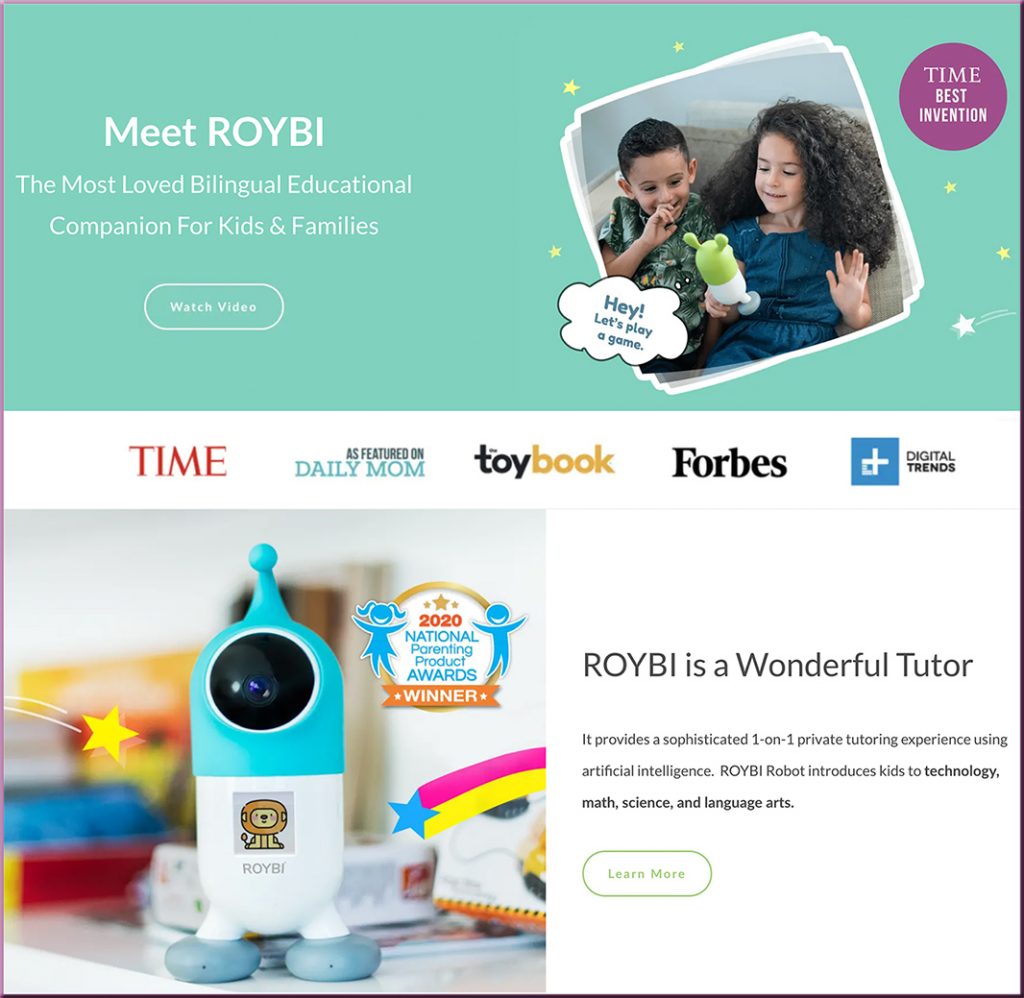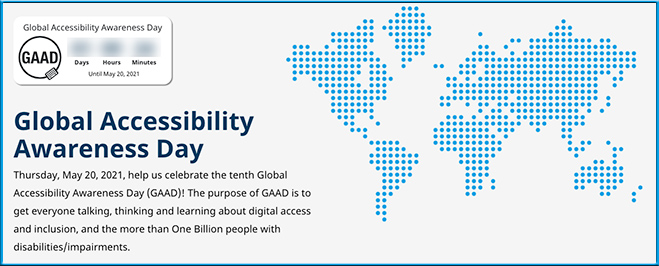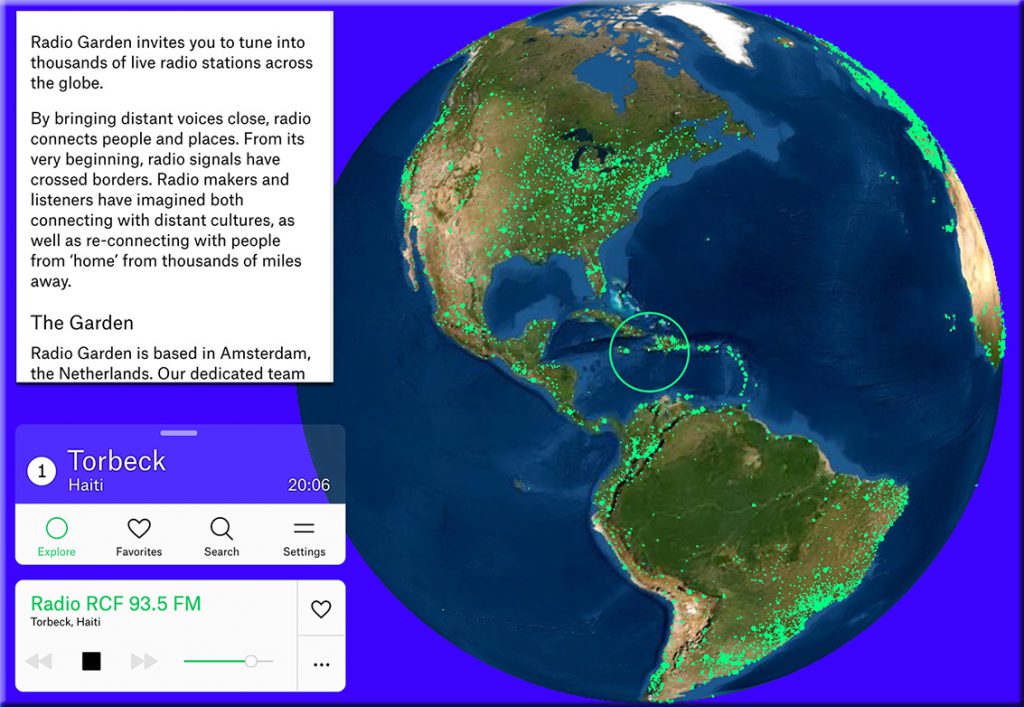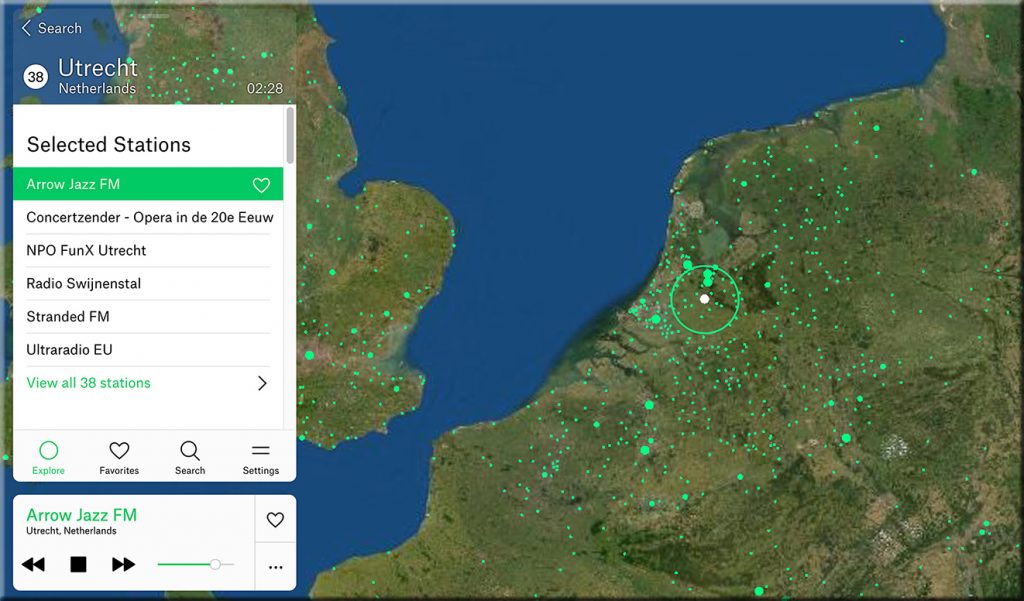Supporting Student Accessibility: Digital Equity | Special Needs & More — from Tech & Learning | November 2021
Top 5 Language Learning Apps in 2021 — per Sinisa Sambolic DMM, 42matters, Zürich
- Duolingo: language lessons by Duolingo
Downloads Over the Last 30 Days: 6,924,751 - Learn 33 Languages Free – Mondly by ATi Studios
Downloads Over the Last 30 Days: 777,312 - ELSA Speak: Online English Speaking App for mobile by ELSA
Downloads Over the Last 30 Days: 537,654 - Lingokids – kids playlearning™ by Lingokids – English Learning For Kids
Downloads Over the Last 30 Days: 533,291 - Cake: Free expressions updated daily! by Cake Corp
Downloads Over the Last 30 Days: 186,041
42matters is a leading provider of mobile app data and app store insights. 42matters facilitates a holistic overview of the mobile app market by leveraging its unique arsenal of machine learning algorithms to research every app and developer on the major app stores and connected TV channel stores. These include the Apple App Store, Google Play, Amazon App Store, Tencent Appstore, AppleTV App Store, Amazon Fire TV, and Roku Channel Store.
50 Sites & Apps for K-12 Education Games — from techlearning.com by Diana Restifo and David Kapuler
Game-based learning is a great way to integrate technology into the classroom while engaging kids with real learning.
Excerpt:
Game-based learning turns potentially tedious study time into an adventurous knowledge quest, complete with catchy soundtracks and digital rewards. It helps keep kids engaged with the subject matter and motivated to pursue greater expertise. Best of all, web- or app-based gameplay integrates easily into both online and in-person classes.
With the demise of Flash at the end of 2020, many favorite educational game sites went under. That’s why we decided to update our popular list below to include the latest and best sites and apps for K-12 education games. Many are free (or offer free basic accounts) and some provide progress tracking and analysis tools for teachers. All will help kids enjoy learning.
Also relevant/see the following resource and excerpt from Goldie Blumenstyk’s The Edge (from the Chronicle of Higher Education)
Creative Acts for Curious People: How to Think, Create, and Lead in Unconventional Ways — by Sarah Stein Greenberg
Excerpt:
Greenberg also makes a compelling case for the “playful and joyous” approaches the d.school has been championing, like the secret handshake or building several prototypes of an ideal chair using tools like cardboard, pipe cleaners, and chewing gum and toothpicks. After so many months of loss and social deprivation, she told me last week, “those elements are more important than ever.”
8 ways to keep learning and developing new skills while at home — from babbel.com by Alice Austin
Being stuck inside doesn’t have to mean an end to personal development. Here’s how to keep learning new things while staying at home.
Excerpt:
Free Code Camp has been assembling a long list of courses that span multiple disciplines, from Data Science and Business to Personal Development and Art. They’re all Massive Open Online Courses (MOOCs), and they allow you to take university-created online classes through providers such as Coursera or Udacity.
So that class you missed out your first time going to college? Now would be the time to go back and really enjoy it.
There are tons of online tutorials on YouTube and many apps that can help you hone your skills. Yousician is an app that provides video tutorials to learn piano, guitar, bass and ukulele. There are other apps that specialize in one area, like Flowkey for piano, or SingTrue for vocals. Whatever instrument you have lying around, there are definitely resources out there for you to improve your skills.
DC: What doors does this type of real-time translation feature open up for learning?https://t.co/beOXFjGZs9#learningfromthelivingclassroom #education #K12 #highereducation #training #learning #lifelonglearning #globallearning #languages #translation https://t.co/TV5InkWHwn pic.twitter.com/MGblMzQbBL
— Daniel Christian (he/him/his) (@dchristian5) August 4, 2021
From DSC:
For that matter, what does it open up for #JusticeTech? #Legaltech? #A2J? #Telehealth?

Duolingo filed to go public — from techcrunch.com by Natasha Mascarenhas and Alex Wilhelm
The edtech unicorn reveals 129% 2020 revenue growth
Excerpt:
Duolingo, a Pittsburgh-based language learning business last valued at $2.4 billion, has officially filed to go public.
Zoom will have automatic translation in real time to videoconferences after buying the company Kites — from entrepreneur.com
Video calling platform Zoom bought a German startup specializing in language translation using Artificial Intelligence.
Excerpt:
Through its official blog , Zoom announced that they are in negotiations to acquire the company Karlsruhe Information Technology Solutions , abbreviated Kites . It is a German startup dedicated to the development of real-time machine translation solutions or MT, for its acronym in English.
Also see:
- How AI Is Changing The Real Estate Landscape — from analyticsindiamag.com
Per Elnaz Sarraf (She/Her), Chief Evangelist at ROYBI Robot:
ROYBI INC, the creator of the award-winning ROYBI Robot, announced today that it was named the winner of the World Economic Forum Smart Toy Awards 2021 in the category of Smart Companion. This is a remarkable achievement!
The category winner had to meet four important criteria:
- Data Privacy & Cybersecurity
- Accessibility
- Innovative Use of AI Transparency
- Healthy Play in Childhood Development.
According to the World Economic Forum representative, Seth Bergeson, our ROYBI Robot met and exceeded these important criteria. ROYBI’s award acceptance ceremony can be watched here.
Also see:
20 Best Websites to Help Kids Learn From Home in 2021 — from wizcase.com by Julia Olech
Excerpt:
That’s why I rounded up a list of the 20 best free websites that provide engaging and fun learning experiences for you and your children. I made sure each website caters to a wide range of ages with games and interactive lessons that won’t bore even the most fidgety kids. The best part is that you can use them all at no cost!
Global Accessibility Awareness Day is this Thursday, May 20, 2021
Help us celebrate the tenth Global Accessibility Awareness Day (GAAD)! The purpose of GAAD is to get everyone talking, thinking and learning about digital access and inclusion, and the more than One Billion people with disabilities/impairments.
Also see:
Video Captions Benefit Everyone — from ncbi.nlm.nih.gov by Morton Ann Gernsbacher
Excerpts:
Video captions, also known as same-language subtitles, benefit everyone who watches videos (children, adolescents, college students, and adults). More than 100 empirical studies document that captioning a video improves comprehension of, attention to, and memory for the video. Captions are particularly beneficial for persons watching videos in their non-native language, for children and adults learning to read, and for persons who are D/deaf or hard of hearing. However, despite U.S. laws, which require captioning in most workplace and educational contexts, many video audiences and video creators are naïve about the legal mandate to caption, much less the empirical benefit of captions.
More than 100 empirical studies, listed in the appendix, document the benefits of captions.
…
With so many studies documenting the benefits of captions, why does everyone not always turn on the captions every time they watch a video? Regrettably, the benefits of captions are not widely known. Some researchers are unaware of the wide-ranging benefits of captions because the empirical evidence is published across separate literatures (deaf education, second-language learning, adult literacy, and reading acquisition). Bringing together these separate literatures is the primary purpose of this article.
From DSC:
Talk about streams of content! Whew!

I received an email from Adobe that was entitled, “This week on Adobe Live: Graphic Design.” (I subscribe to their Adobe Creative Cloud.) Inside the email, I saw and clicked on the following:
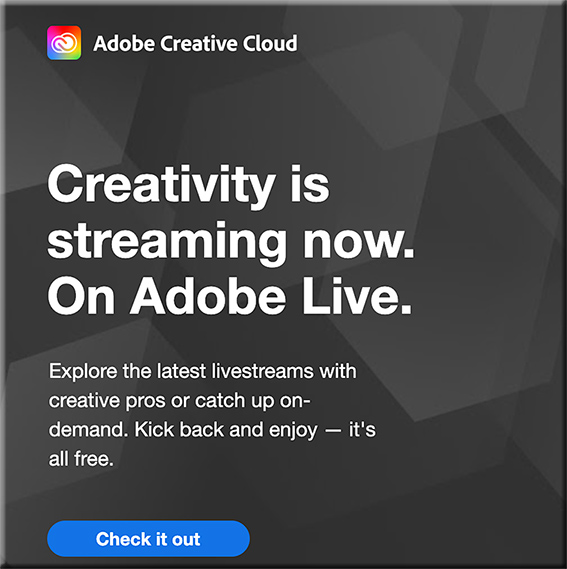
Below are some of the screenshots I took of this incredible service! Wow!
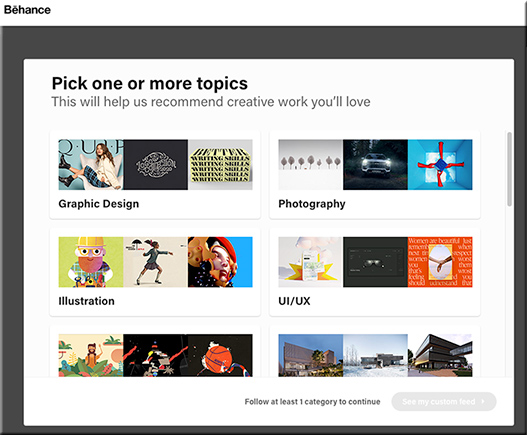
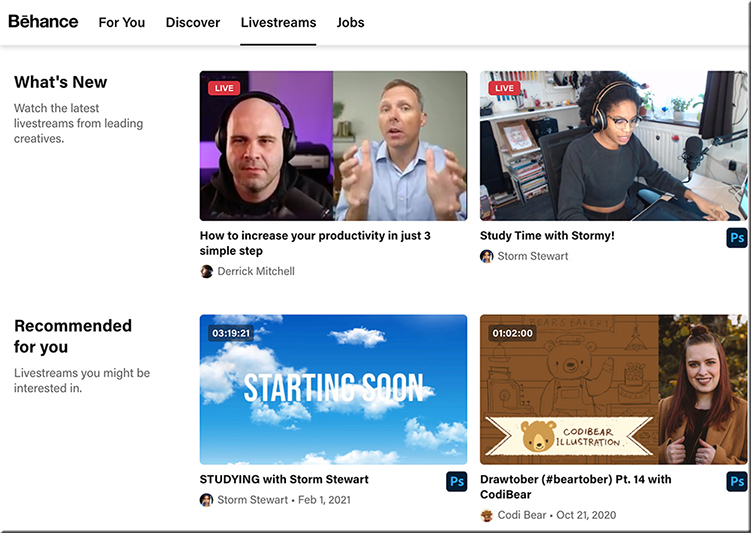


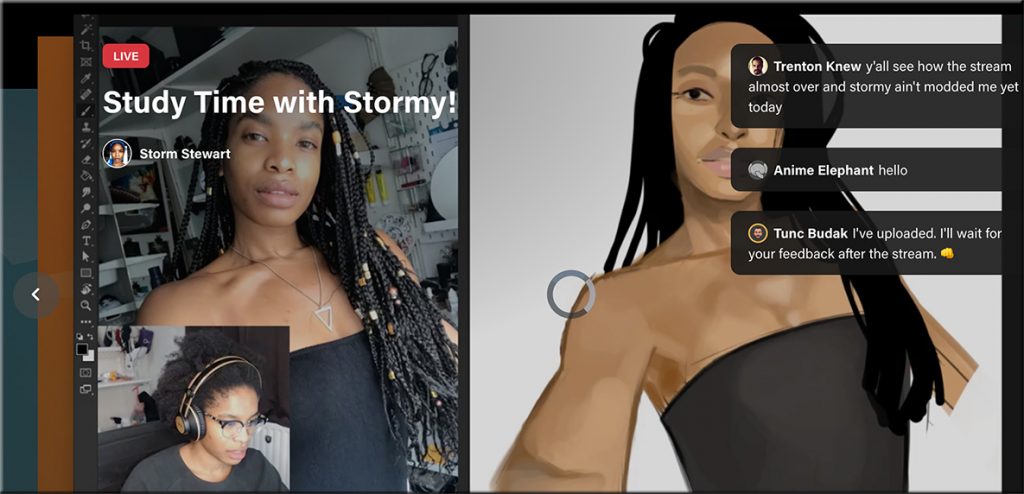

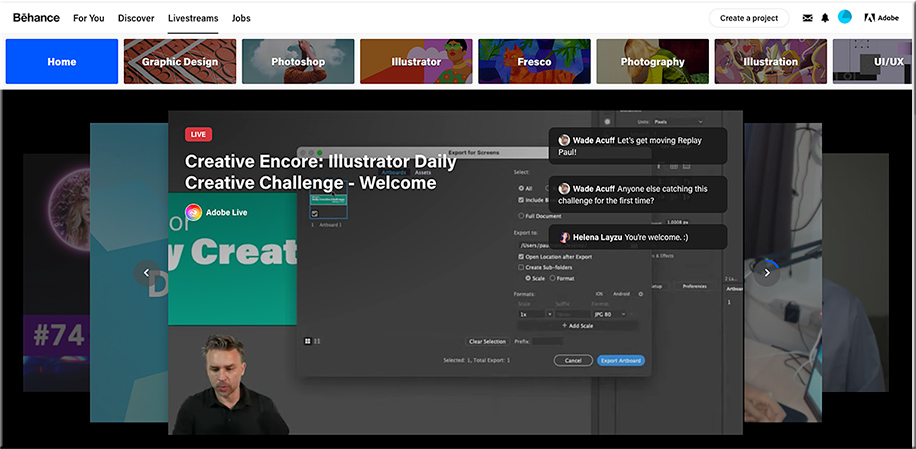

From DSC:
So Abobe — via Behance — is already doing several pieces of the “Learning from the Living [Class] Room” vision. I knew of Behance…but I didn’t realize the magnitude of what they’ve been working on and what they’re currently delivering. Very sharp indeed!
Churches are doing this as well — one device has the presenter/preacher on it (such as a larger “TV”), while a second device is used to communicate with each other in real-time.
Radio.Garden — with thanks to David Pogue for this resource
This is the COOLEST. A Google Earth-type representation of the planet. Every green dot is a radio station. Click any dot to listen in. It’s like cultural teleportation. You could spend hours with this thing… https://t.co/rdEHUUfgvk pic.twitter.com/VJgyzVClJD
— David Pogue (@Pogue) February 14, 2021
From DSC:
This is amazing! Some screenshots:
Several questions/reflections come to my mind:
- What could those teachers and professors who are trying to teach someone a language do with this?!
- If this can be done with radio stations, what can be done with learning-related streams of content?!
- Talk about “More Choice. More Control.” Man o’ man!

Addendum on 2/28/21:
Could this type of interface be used to navigate the world of work? Where instead of nations, you would have arenas of work?
Best Online Educational Games for High School Students — from edtechreview.in by Saniya Khan
Excerpt:
…the introduction of educational games to kids helps increase their motivation and engagement, enhance visual skills, improve students’ interaction and collaboration abilities with their peers, and apply gaming values in a real-world situation; most importantly, it improves learning.
Learning Apps For Kids To Explore in 2021 — from edtechreview.in by Priyanka Gupta
Excerpt:
Living in a digital era and in times when technology has kept education going, let’s look at some promising learning apps for kids to explore in 2021.
From DSC:
For me the Socratic method is still a question mark, in terms of effectiveness. (I suppose it depends on who is yielding the tool and how it’s being utilized/implemented.)
But you have one student — often standing up and/or in the spotlight — who is being drilled on something. That student could be calm and collected, and their cognitive processing could actually get a boost from the adrenaline.
But there are other students who dread being called upon in such a public — sometimes competitive — setting. Their cognitive processing could shut down or become greatly diminished.
Also, the professor is working with one student at a time — hopefully the other students are trying to address each subsequent question, but some students may tune out once they know it’s not their turn in the spotlight.
So I was wondering…could the Socratic method be used with each student at the same time? Could a polling-like tool be used in real-time to guide the discussion?
For example, a professor could start out with a pre-created poll and ask the question of all students. Then they could glance through the responses and even scan for some keywords (using their voice to drive the system and/or using a Ctrl+F / Command+F type of thing).
Then in real-time / on-the-fly, could the professor use their voice to create another poll/question — again for each student to answer — based on one of the responses? Again, each student must answer the follow up question(s).
Are there any vendors out there working on something like this? Or have you tested the effectiveness of something like this?
Vendors: Can you help us create a voice-driven interface to offer the Socratic method to everyone to see if and how it would work? (Like a Mentimeter type of product on steroids…er, rather, using an AI-driven backend.)
Teachers, trainers, pastors, presenters could also benefit from something like this — as it could engage numerous people at once.
#Participation #Engagement #Assessment #Reasoning #CriticalThinking #CommunicationSkills #ThinkingOnOnesFeet #OnlineLearning #Face-to-Face #BlendedLearning #HybridLearning
Could such a method be used in language-related classes as well? In online-based tutoring?









